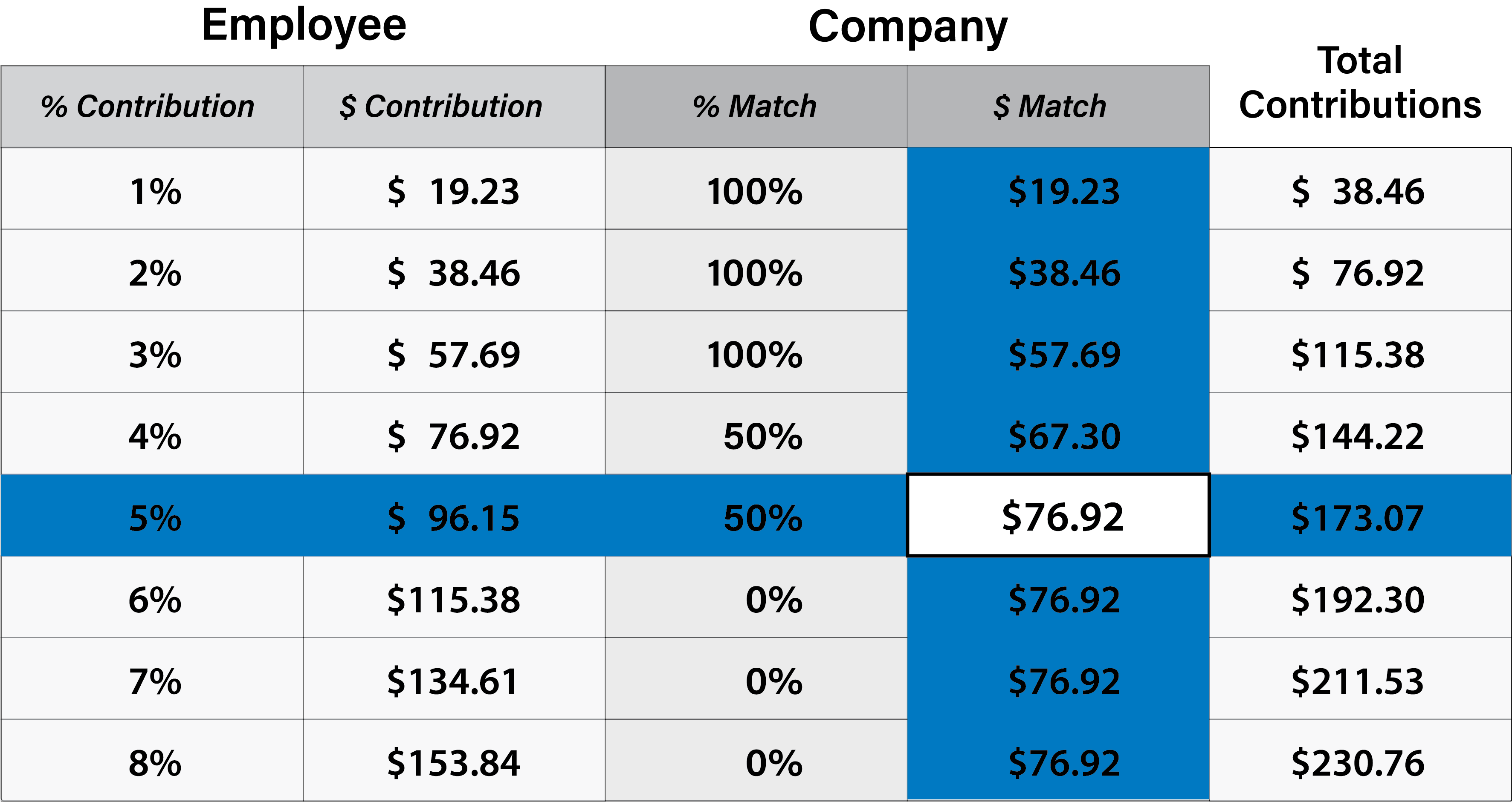Are you leaving money on the table? If your employer offers a 401(k) match, you could be leaving a significant amount on the table by not taking full advantage of it. Saving for retirement is an important part of any budget, and if your company provides a 401(k) plan, you’re already ahead of the game.
But how does the 401(k) match process work? Many companies strengthen their retirement plans with employer matching benefits, meaning they’ll match a percentage of your savings contributions.
At Slavic401k, we believe your retirement savings should work as hard as you do. With an employer-match 401(k), you’re not just saving your own money — you’re getting free contributions from your employer. That’s right, free money. Read on to discover how employer match benefits can quickly and effortlessly boost your retirement nest egg over time.
How Does a 401(k) Employer Match Work?
Think of it as a bonus for your future. For every dollar you contribute to your 401(k), your employer contributes too—sometimes up to a specific percentage of your salary. For example, if your employer offers 5% in match dollars, then you too, should contribute 5%, doubling down on contributions to your retirement fund annually. But, if you only contribute 3%, then so will your employer. For high-earning employees, having a percentage matching contribution is more beneficial than a dollar amount, since they are typically a lot lower.
Regardless of how the matching employer contribution plan is structured, if there’s free money available thanks to the generosity of your employer, take advantage! Talk to your company’s Human Resources department to learn about the employer 401(k) matching contribution options available to you as employee benefits.

Why Should You Take Advantage of It?
From a participant standpoint, employer matching contributions are important because they double your retirement savings and provide income tax benefits. Contributions made into a tax-advantaged 401(k) plan won’t be taxed until you withdraw the funds, and with pre-tax contributions, everything contributed to your 401(k) will reduce your current taxable income, saving you more money over time.
Start Now, Reap the Benefits Later
- Free Money: It’s hard to find a better deal than an employer match. It’s like getting a raise that goes directly toward your retirement.
- Compound Growth: The earlier you start, the more time your money has to grow. When you add in employer contributions, the growth potential multiplies.
- Financial Security: Maximizing your employer match is one of the easiest and most effective ways to boost your retirement nest egg.
Maximizing 401(k) Contribution Limits and Employer Match Benefits
When it comes to growing your retirement savings, fully leveraging your 401(k) contributions and employer 401(k) match is essential. An employer match is essentially free money—contributing enough to receive the full match can significantly boost your savings, accelerating your progress toward retirement.
Maximizing your 401(k) means contributing up to the limits set by the IRS, which can change year-to-year. By reaching these limits, you’re ensuring that you’re saving as much as possible in a tax-advantaged way. Pair this with your employer’s match, and you can dramatically increase the total amount going into your retirement account.
Why Is This So Important?
Taking full advantage of both your contribution limits and the employer match not only allows your savings to grow faster but also maximizes the compound growth potential of your investments over time. Even small increases in contributions can add up, especially when you factor in the additional contributions your employer makes on your behalf in response to your contributions.
Don’t miss out on this valuable benefit—by contributing enough to get the full match and aiming to reach your annual contribution limits, you’re setting yourself up for a more financially secure future.
Don’t miss out on this valuable benefit—contribute enough to get every cent of your employer’s match!
Know Your Company’s 401(k) Vesting Schedule
If you’re part of an employer-sponsored 401(k) program, your fund will eventually vest. Vesting means that you earn full rights to employer-provided funds over a specific amount of time. If your company’s vesting policy is two years, then you won’t have full ownership of the funds until you reach two years of successful employment. If you don’t, however, then your employer has the right to withdraw the funds they contributed prior to the two-year mark upon your resignation or dismissal. To encourage employee loyalty, employers commonly provide matching contributions to their employees’ retirement accounts with terms that limit how quickly the funds can be accessed.
Note that while employer contributions have vesting requirements, an employee’s own contributions are always 100% vested and cannot be forfeited to your employer. This is your money that you’re choosing to put away for retirement. To learn more about vesting, visit the IRS.
If you find yourself opening the door to a new career, read our blog to learn what to do with your 401(k) when you change employers. This is valuable and important information – we heartily encourage you to read it.
Turn Every Dollar into Two: The Magic of Employer 401(k) Match
Saving for retirement doesn’t have to be frustrating or challenging. With personal savings and retirement accounts, as well as employer-sponsored retirement savings accounts, you are well on your way to a healthy, financially stable future. Slavic401k offers multiple resources for its employer-sponsored investors, as well as free participant education tools. If you get stuck and have questions along the way, don’t forget to contact your company’s Human Resource team, and if you’re a Slavic401k participant, contact us here.





